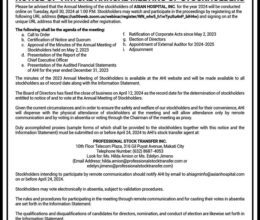Strategic planning for HR department

We’re nearing the last quarter of the year. In preparation for the new year, how do we assess the capability and competency of our human resources (HR) department to prepare it to respond to the challenges? — Mill Stone.
The key word is “manage,” and not “respond.” The idea is not to be reactive. Mindset is everything. Your outlook should be positive and proactive ahead of any strategic planning exercise for your department, and ultimately for the whole organization.
I don’t know what you’re thinking but the last quarter of the year is not enough time to come up with an intelligent plan. You should have started strategic planning by gathering all the key information by July or August. As of today, there are little over three months remaining in the calendar.
In reality, you only have two months to do strategic planning. In this country, December is typically a write-off, because of every conceivable extracurricular activity that crops up near the end of the year, including, for HR, giving out annual employee awards.
Two months may not be enough to assess the capabilities of your HR department. First of all, you need input from an annual employee opinion survey. If you don’t have one, what’s the next best option? Gather the input of all department heads. This is easy to do, but not necessarily objective compared to what an opinion survey might give you.
To fast-track the gathering of information from all department heads, limit them as to the number of projected number of employees, broken down in terms of employment status like regular and contractual. The numbers must be identified on a per-position level.
Next is the kind of training required for them to acquire the needed knowledge, attitude, skills, and habits (KASH). This is followed by the type of compensation required to support and maintain employees with the right KASH.
Last, identify the kind of management intervention aside from training needed to raise productivity.
PROCESSThe sooner you can get these inputs, the more solid your footing is in starting the HR strategic planning process. But remember that there’s no single approach to any planning activity. It varies from organization to organization, the industry, market positioning, customer demands, the competitive environment, the state of the company’s technological evolution, and other factors.
Here are a basic framework and step-by-step process you could follow:
Step One. Analyze the environment. HR must understand the external business environment and the prevailing trends. This is not a monopoly of the operations, sales, marketing and technical departments. HR must know the answers to the following questions: How much is the projected wage increase judging by the prevailing rate of inflation? How will increased labor costs affect pay policy? How many employees are needed? How are they going to be distributed to the various departments? What are the required skills?
Step Two. Forecast the staffing level needed. Forecasting is not an exact science. It is subject to uncertainty and error. Be scientific about it by making use of statistics based on historical data.
For the number of employees, you must guard against “empire buildings” by department heads who seek to gain influence by overstaffing their units.
Step Three. Determine the future demands on HR. Aside from staffing needs, there are many specific requirements that HR must deliver. Using the framework of David Ulrich, HR must work relentlessly by wearing various hats: that of an employee champion, a change agent, a business partner, and an administrative expert.
As an employee champion, HR must take the lead in protecting labor rights. As a change agent, HR must practice continuous improvement to become a profit center rather than a cost center. As a business partner, HR should provide expertise on the industry’s personnel landscape. And as an administrative expert, HR must be focused on improving its systems to help the workers do a good job.
Step Four. Implement and adjust the HR plan. The last step in HR strategic planning is the implementation and evaluation of results. Success comes when HR departments skillfully weather labor shortages or surpluses, reduce attrition to the single digits, manage conflicts between bosses and subordinates, and so on.
The important thing is to determine which of the planning part contributed to success or failure. Evaluation serves to diagnose where the process failed and seeks to prevent such failures from recurring.
Bring Rey Elbo’s effective leadership program called “Superior Subordinate Supervision” to your management team. Or chat with him on Facebook, LinkedIn, X (Twitter) or e-mail elbonomics@gmail.com or via https://reyelbo.com.




